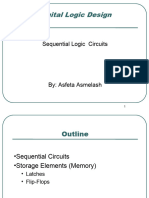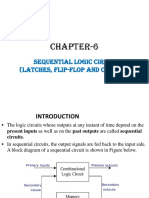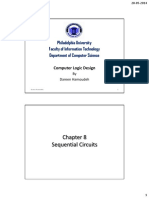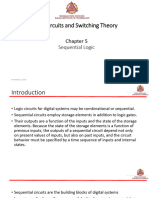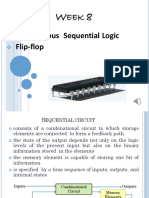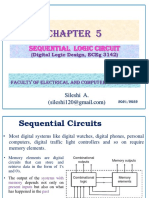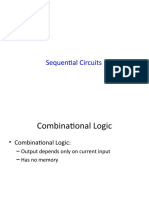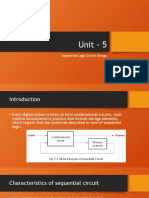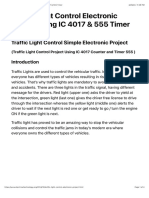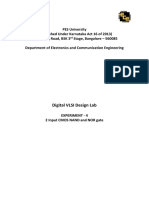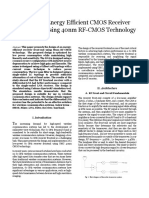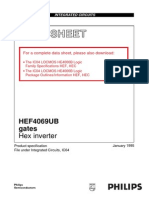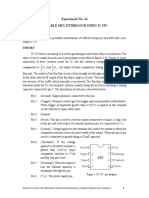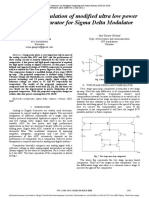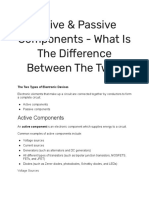0% found this document useful (0 votes)
16 views28 pagesCh05-Part 1
The document discusses synchronous sequential logic and clocked sequential circuits. It describes different types of latches like SR latches and D latches. It also explains the need for flip-flops and describes different types of flip-flops like D, JK, and T flip-flops. Their characteristic equations and tables are provided.
Uploaded by
hezzat964Copyright
© © All Rights Reserved
We take content rights seriously. If you suspect this is your content, claim it here.
Available Formats
Download as PPTX, PDF, TXT or read online on Scribd
0% found this document useful (0 votes)
16 views28 pagesCh05-Part 1
The document discusses synchronous sequential logic and clocked sequential circuits. It describes different types of latches like SR latches and D latches. It also explains the need for flip-flops and describes different types of flip-flops like D, JK, and T flip-flops. Their characteristic equations and tables are provided.
Uploaded by
hezzat964Copyright
© © All Rights Reserved
We take content rights seriously. If you suspect this is your content, claim it here.
Available Formats
Download as PPTX, PDF, TXT or read online on Scribd
/ 28









